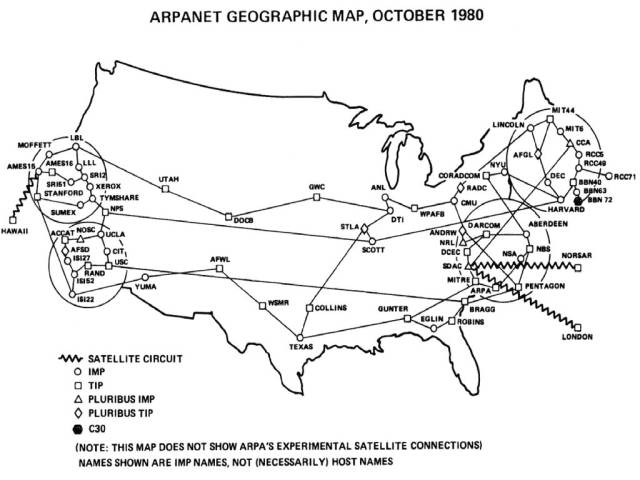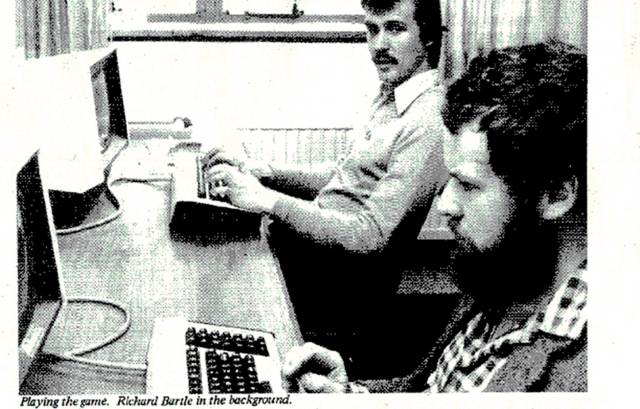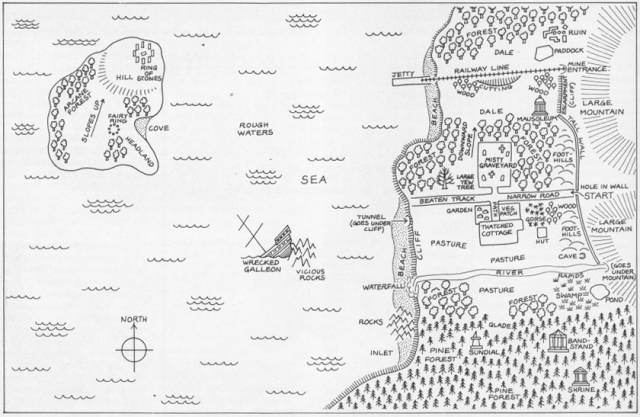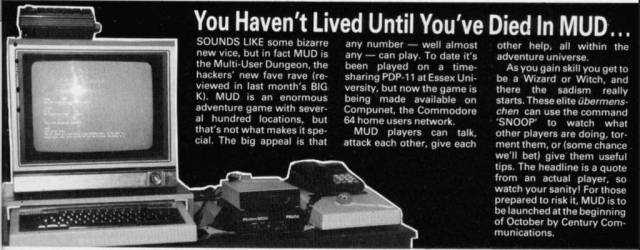
We review the history of persistent worlds that recreated a fictional environment and a reality of their own.
The history of MMOs is rich and extremely exciting. If we look for the origin of its wake, we come across the 1970s, when the first online virtual world was established on a campus computer. To place ourselves in this era we must do an exercise of imagination and forget the Internet as we know it. The first precedent dates from the distant pre-internet era. We are talking about a period in history where universities and government institutions were interconnected to ARPANET. Through a computer, users could access a communication system never seen before. The door to a cyberspace where to share, consult and, of course, play.

In what today seem like monstrous antiquities, some student gaming enthusiasts experimented with programming languages. Thus small interactive experiments with great potential arose where the kids spent the afternoons. The creative engine of these young people was the wide universe of Dungeon & Dragons and the conversational adventures that swept through the 70s. The conjunction of its most characteristic elements planted the seed of the first virtual world.
But what defines a virtual world? Well, first of all, it is a fictional environment that simulates our reality. It can be set at any time and contains elements with which the player interacts. Second, the world is home to players represented by avatars who communicate in real time. Lastly, it is a persistent world. Everything we do inside will be recorded.
More than 40 years ago some players were able to be part of this crucial moment in the industry.
Virtual worlds in text
In late 1978, Roy Trubshaw, a clever student at the British ESSEX university, begins programming an RPG inspired by Zork, his favorite conversational adventure. He baptizes it as MUD (Multi-User Dungeon) in honor of the title, which was scheduled to be released under the name ‘Dungeon’. Like Zork, its creation is a text-based adventure in which players move through a series of locations and perform actions by typing in words or phrases. However, his offspring came with a brilliant novelty under his arm: multiplayer. A group of users could participate in a fantasy wrapped world and interact with each other. And such a thing in the late 1970s was unmatched.
The first version of the game was a mere prototype with a few linked locations. After a few months a second, more sophisticated version appeared, already dubbed the MUD. Although the most robust one came out of the oven in 1980, as a result of the vision of a new partner, Richard Bartle.

Roy oozed talent as a programmer, but the universe he was crafting was falling apart as he lacked a design basis. The entry into the field of Richard Bartle, a fan of Tolkien and D&D, was the compass that Roy’s missing on his journey. His first job was to make a logical connection between locations, and then the implementation of challenges in the form of puzzles and enemies.
Shaping the world
Roy graduated from college and disappeared from the map. Development automatically passed to Richard, who continued with the project in lone wolf mode. “When he left Essex, I took full control. At that point, there was no goal for the players, and just primitive communication, ”Richard indicated. He rewrote much of the code to make it more functional and consistent. It added a multitude of rooms (it reached an incredible 600, with an area inspired by Fraggle Rock) and cooperative puzzles, applying a ‘Tolkian’ aura to the overall design. This is how he forged the exciting world that he simply called ‘The Land’.
You are standing on a narrow path between The Land and where you came from. To the north and south are the small foothills of a pair of majestic mountains, with a great wall surrounding them. To the west, the path continues, and in the distance you can see a thatched-roof hut in front of an old cemetery. The exit is to the east, where a blanket of mist covers the secret path from which you entered The Land.
-
The first Essex MUD texts.
At that time, the only way to enter MUD was through the university computers, but ESSEX provided the means so that users could connect to the JANET network from home in order to enjoy the game. On weekdays at dawn, and on weekends for most of the day, individuals accessed that magical microcosm with a modem. The 36 concurrent users who accepted the game soon fell into small numbers. MUD had long lines of gamers eager to connect to the ESSEX DEC-10 computer and experience it. In addition, the addiction of many young people with MUD resulted in dizzying phone bills.

Gamers who were born in the beautiful days of fiber optics may wonder … how on earth could they connect in those days? The movie War Games offers a good demonstration. The stone age of the internet that only a lucky few could experience.
The title was recognized by university students and in gaming circles, but its range was limited geographically. But that barrier was going to be overcome in the spring of 1980 when ESSEX joined ARPANET. From that moment on, external users from across the pond enthusiastically discovered the considered first MMO of the pre-internet era.
“We wanted the game to have pure freedom, to allow people to be themselves”
Richard made enhancements to give the title key role features. Characters had attributes that affected the resolution of actions. And the ‘stats’ were increased by the experience points that were obtained by defeating monsters or solving puzzles. Also, depending on the number of points, they had access to honorary titles.

In his challenge to expand the adventure, Richard discovered with fascination how the players acted according to his particular designs. They were really the MUD builders. Many earned a few pages in the designer’s book of anecdotes:
“The graveyard was very useful to Gwyn the Wizard in his mortal days as he worked his way up to that high rank. It’s pretty easy for newbies to get in accidentally, and it takes them a while to figure out how to get out (type OUT address!). So Gwyn waited at the beginning of the maze, slaughtered anyone who entered, then ran further inside and fell asleep. Sleeping makes you regain lost stamina points in fights and is usually very dangerous in case someone bumps into you. But who would find you in a labyrinth ?! “
The veterans quickly took command of ‘The Land’. His thirst for power generated the PK phenomenon (player killer), players who did not hesitate to attack others to steal points. And they also showed no mercy to the poor fawns who first set foot in the game. The veterans knew the mapping by heart and managed to get before the rest to the rooms where the treasures reappeared after the world reset. With these tricks, many players reached the maximum score range called ‘wizard’, something like a god mode with great powers to shape the world (basically they accessed debug mode). They did and undo as they pleased, so Richard had to lag behind in order to limit their reach. The Wizard became a kind of GMs and implemented rules of conduct so that newcomers and experts could coexist in harmony. Over time, players forged bonds of friendship and camaraderie in these mysterious lands. And the deepest bonds brought love. Silly, the first weddings were held at MUD.

“We wanted the game to have pure freedom, to allow people to be themselves,” said Richard. “We introduced character classes and levels because I wanted people to have some indication of their own personal merits, based on what they did, rather than where they were born. That’s why I’m not a fan of free games where you can just buy progress. That’s a total contravention of what we were trying to do with the MUD. We were creating a true meritocracy. Not because I thought a meritocracy was the only true way, but if we were going to have a system where people went up from level, meritocracy was the least bad approach ”.
In its years of life, the title known originally as Essex MUD or MUD1 became a prolific genre that paved the way to hundreds of virtual worlds. This is how Scepter of Goth or Island of Kesmai emerged, two prominent representatives within a list that grew fatter over the years.
Online Services companies
At the beginning of the 80s, the first online service companies aimed at the home user saw the light. From the comfort of home, any individual could access spaces of all kinds: news, email, chat, forums, announcements and information of interest. In addition to online games and MUDs.

British network Compunet added MUD1 (the third version of the game) to its catalog in 1984. Unfortunately, the weak British infrastructure held back the aspirations of the title. Also in the UK there was a fourth version of the game exclusive to British Telecom, that was MUD2, but it faced many setbacks until it settled. On the other side of the pond the situation was more favorable. In 1987, CompuServe licensed MUD1 under the name ‘British Legends’ and set a price of $ 12.50 an hour. They wanted to sell it at all costs and did not skimp on marketing, gleefully advertising it as the game that took the UK by storm. And it seems that the slogan stuck: MUD brought together a solid community that stayed together until the last days of the title.
Thanks to the fans, it is still possible to play this antique jewel today. The British Legends website has been active since 1999 to guide the curious through this historic episode. Also available on the MUD2 page. And for any computer geek who wants to dig into the guts of the game, Stanford University stores the source code for MUD1.
Progress continued its course. And we planted ourselves in the 80s, where the genre took off into amazing virtual worlds. But we will address that in the next episode of this exciting story.
